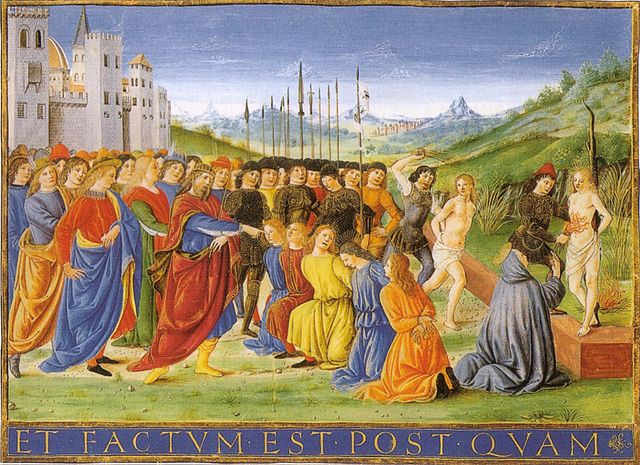
These posts trace the evolution of Isaiah’s “Suffering Servant” from a poetic symbol for the nation of Israel into a dying and rising Messiah even before Christianity emerged on the scene. (See the Wikipedia article for background on the Servant Songs in Isaiah.) The previous post showed the apparent influence of the Suffering Servant of Isaiah 53 upon the books of Zechariah and Ben Sirach/Sira. This post pauses to look at some background before resuming with the way the Book of Daniel adapted Isaiah’s Suffering Servant idea in the light of contemporary events — around 165/164 BCE. My source for these posts is
Hengel, Martin, ‘The Effective History of lsaiah 53 in the Pre-Christian Period’, in The Suffering Servant: Isaiah 53 in Jewish and Christian Sources (ed. Bernd Janowski and Peter Stuhlmacher; Grand Rapids, MI: William B. Eerdmans, 2004), pp. 75-146. (Bailey is responsible for translating Hengel’s essay into English and updating it in consultation with the author.)
Just as the author of the Book of Zechariah looked for fulfilment of prophecies in his own day so did the author of the Book of Daniel and the chaotic times of Antiochus IV Epiphanes — armed struggle, persecution, temple defilement — supplied much material to fuel imaginations for this sort of thing. The events of 165/4 and the Maccabean revolt changed the way that unique passage in Isaiah 53 came to be interpreted by many. New ideas about the glorification of martyrs and even the ability of the blood of martyr heroes to take the place of atoning sacrifices entered the world of Judaism and its various sects. The Greeks had long held comparable ideas about human sacrifice and suffering. From the archaic period we encounter in Greek literature the pharmakos motif (see also the EB article). Many of us are aware of the sacrifice of the virgin Iphigenia bringing about the favour of the gods on the eve of the Trojan War. We see a new stage of heroizing fallen warriors with the Persian Wars. Those who died for their city-state and its holy laws came to be glorified as martyr saviours of their people. The closest to anything like these practices and cultural attitudes in the Old Testament are the stories of Jephthah’s daughter, Samson and the song of Deborah. The Old Testament condemned the child sacrifice of neighbouring Canaanites and Phoenicians. Those who died died because of their own sin — that was the dominant message in the OT. Prophets were slain but their deaths were not glorified or studied in any great detail as we might expect among their Greek counterparts. The Maccabean revolt changed everything. Continue reading “From Israel’s Suffering (Isaiah’s Servant) to Atoning Human/Messianic Sacrifice (Daniel)”
